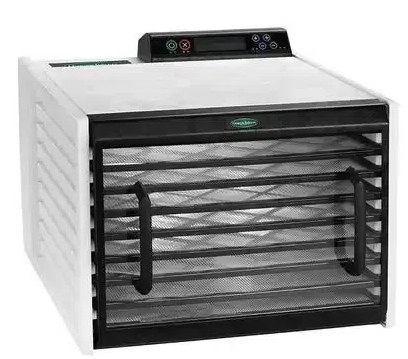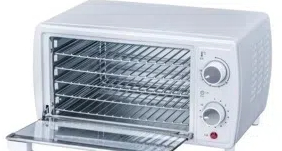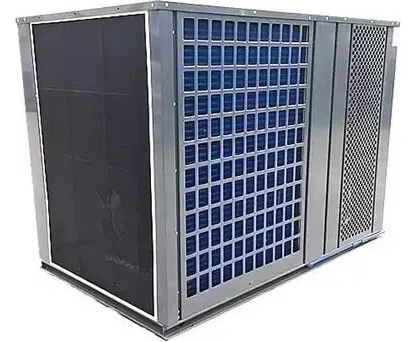
Content Menu
● Introduction
● Understanding Heat Pump Dryers
● Advantages of Heat Pump Dryers in Food Drying
● Applications of Heat Pump Dryers in Food Industry
● Challenges and Considerations
● Future Trends in Food Drying Technology
● Conclusion
● Frequently Asked Questions
>> 1. What is a heat pump dryer?
>> 2. How does a heat pump dryer work?
>> 3. What are the benefits of using a heat pump dryer for food?
>> 4. Can heat pump dryers be used for all types of food?
>> 5. What are the maintenance requirements for heat pump dryers?
Introduction
Food preservation is a critical aspect of the food industry, ensuring that products remain safe and nutritious for consumption over extended periods. One of the most effective methods of food preservation is drying, which removes moisture and inhibits the growth of spoilage organisms. In recent years, heat pump dryers have emerged as a revolutionary technology in the food drying process, offering numerous advantages over traditional drying methods. This article explores the role of heat pump dryers in food drying, highlighting their benefits, applications, and future potential.
Understanding Heat Pump Dryers
Heat pump dryers operate on a simple yet effective principle: they use a heat pump to transfer heat from one place to another, allowing for efficient moisture removal from food products. Unlike traditional dryers that rely on direct heat sources, heat pump dryers recycle hot air, making them significantly more energy-efficient. The process involves drawing in moisture-laden air, heating it, and circulating it through the food. The moisture is then condensed and collected, while the dry air is recirculated, creating a closed-loop system that minimizes energy loss.

Advantages of Heat Pump Dryers in Food Drying
One of the most significant advantages of heat pump dryers is their energy efficiency. They consume approximately 50% less energy than traditional dryers, leading to substantial cost savings for food manufacturers. This efficiency not only reduces operational costs but also contributes to a lower carbon footprint, making heat pump dryers an eco-friendly choice for the food industry.
Another key benefit is the gentle drying process that heat pump dryers provide. Traditional drying methods can often lead to the loss of essential nutrients and flavor in food products. In contrast, heat pump dryers operate at lower temperatures, preserving the quality and nutritional value of the food. This is particularly important for high-value products such as fruits and vegetables, where maintaining flavor and texture is crucial.
Heat pump dryers also offer versatile installation options. They do not require external venting, allowing them to be installed in various locations within a food processing facility. This flexibility can lead to more efficient use of space and resources.
Additionally, heat pump dryers have low maintenance requirements and a longer lifespan compared to traditional dryers. This means that food manufacturers can enjoy reliable performance with minimal downtime, further enhancing productivity.
Applications of Heat Pump Dryers in Food Industry
Heat pump dryers are increasingly being used in various applications within the food industry. They are particularly effective in drying fruits, vegetables, and herbs, where maintaining quality is paramount. For instance, companies specializing in dried fruits have reported significant improvements in product quality and shelf life after switching to heat pump drying technology.
In the meat and fish processing sectors, heat pump dryers are used to create jerky and other dried products. The ability to control temperature and humidity levels allows for consistent drying results, ensuring that products meet safety standards while retaining their flavor and texture.
Several case studies have demonstrated the successful implementation of heat pump dryers in food production. For example, a leading fruit processing company adopted heat pump technology and reported a 30% reduction in energy costs while improving the quality of their dried fruit products.

Challenges and Considerations
Despite their many advantages, heat pump dryers do come with some challenges. The initial investment costs can be higher than traditional drying methods, which may deter some manufacturers from making the switch. However, the long-term energy savings and improved product quality often justify the upfront costs.
Another consideration is the drying time. Heat pump dryers typically take longer to dry food compared to traditional methods. This can be a disadvantage for manufacturers with high-volume production needs. However, the benefits of energy efficiency and product quality often outweigh this drawback.
Maintenance and operational considerations are also important. While heat pump dryers require less maintenance than traditional dryers, regular cleaning of filters and occasional servicing are necessary to ensure optimal performance.
Future Trends in Food Drying Technology
The future of food drying technology looks promising, with ongoing innovations in heat pump dryer design and functionality. Manufacturers are increasingly integrating smart technology into heat pump dryers, allowing for real-time monitoring and control of drying processes. This can lead to even greater energy savings and improved product quality.
As the food industry continues to prioritize sustainability and efficiency, the adoption of heat pump dryers is expected to grow. Their ability to reduce energy consumption and maintain product quality makes them an attractive option for food manufacturers looking to enhance their operations.
Conclusion
Heat pump dryers represent a significant advancement in food drying technology, offering numerous benefits that can enhance food preservation processes. Their energy efficiency, gentle drying capabilities, and low maintenance requirements make them an ideal choice for food manufacturers. As the industry continues to evolve, the adoption of heat pump dryers is likely to increase, paving the way for a more sustainable and efficient future in food processing.

Frequently Asked Questions
1. What is a heat pump dryer?
A heat pump dryer is a type of dryer that uses a heat pump to recycle hot air, making it energy-efficient and environmentally friendly.
2. How does a heat pump dryer work?
It works by drawing in moisture-laden air, heating it, and then circulating it through the food. The moisture is condensed and collected, while the dry air is recirculated.
3. What are the benefits of using a heat pump dryer for food?
Benefits include energy savings, gentle drying that preserves nutrients, and the ability to operate without external venting.
4. Can heat pump dryers be used for all types of food?
Yes, they are versatile and can be used for fruits, vegetables, meats, and herbs.
5. What are the maintenance requirements for heat pump dryers?
They require regular cleaning of filters and occasional servicing, but overall maintenance is low compared to traditional dryers.












